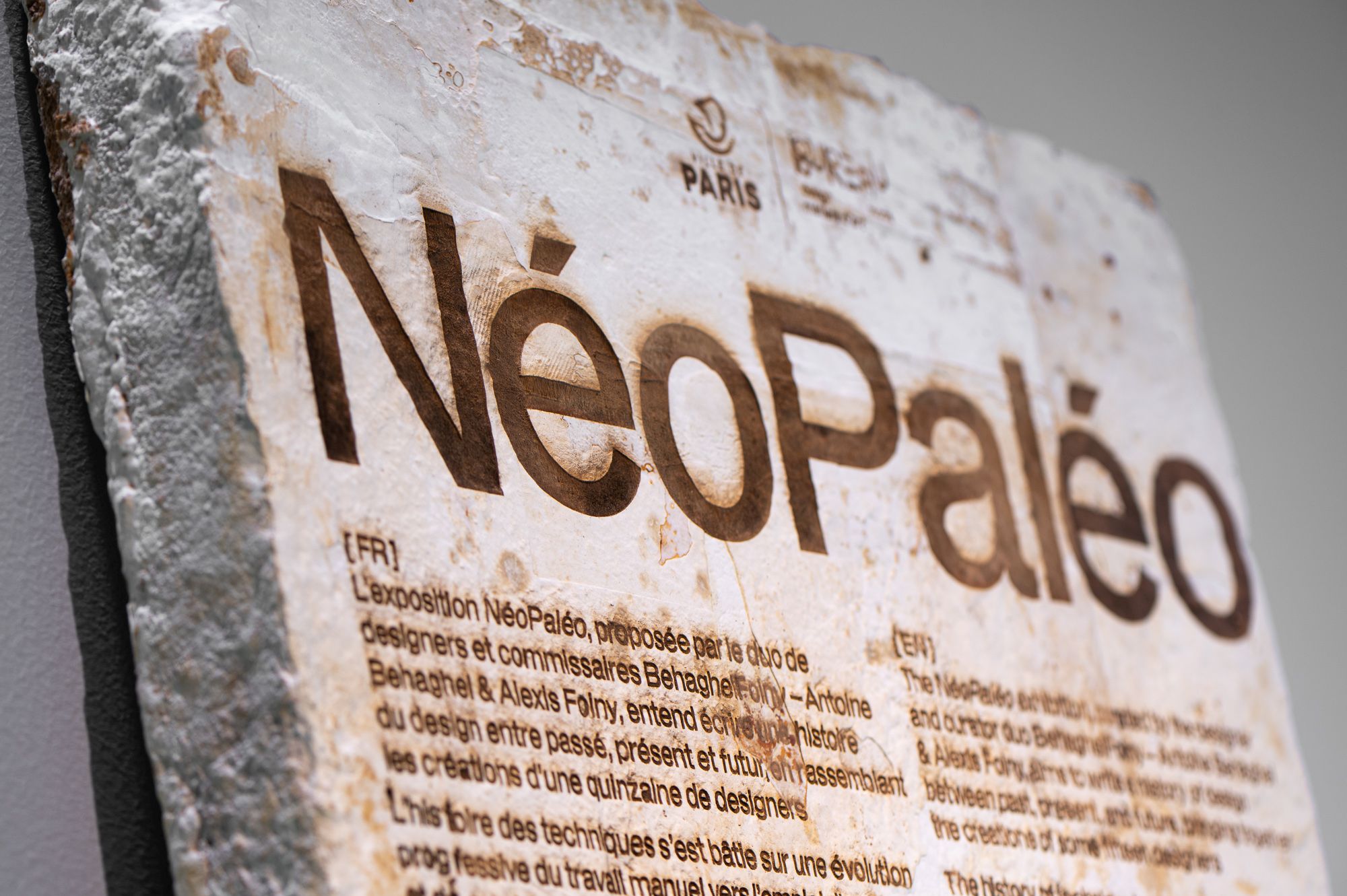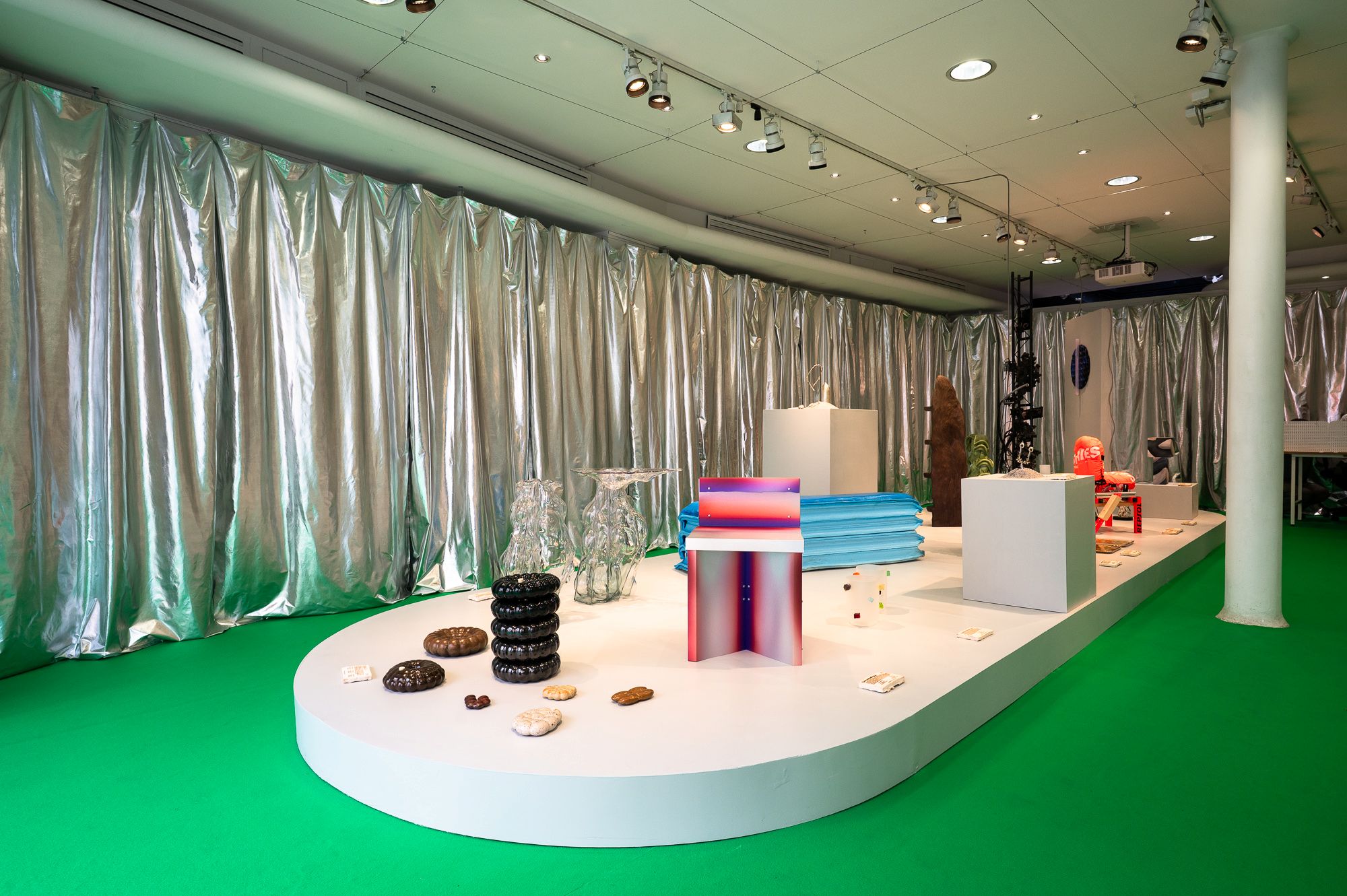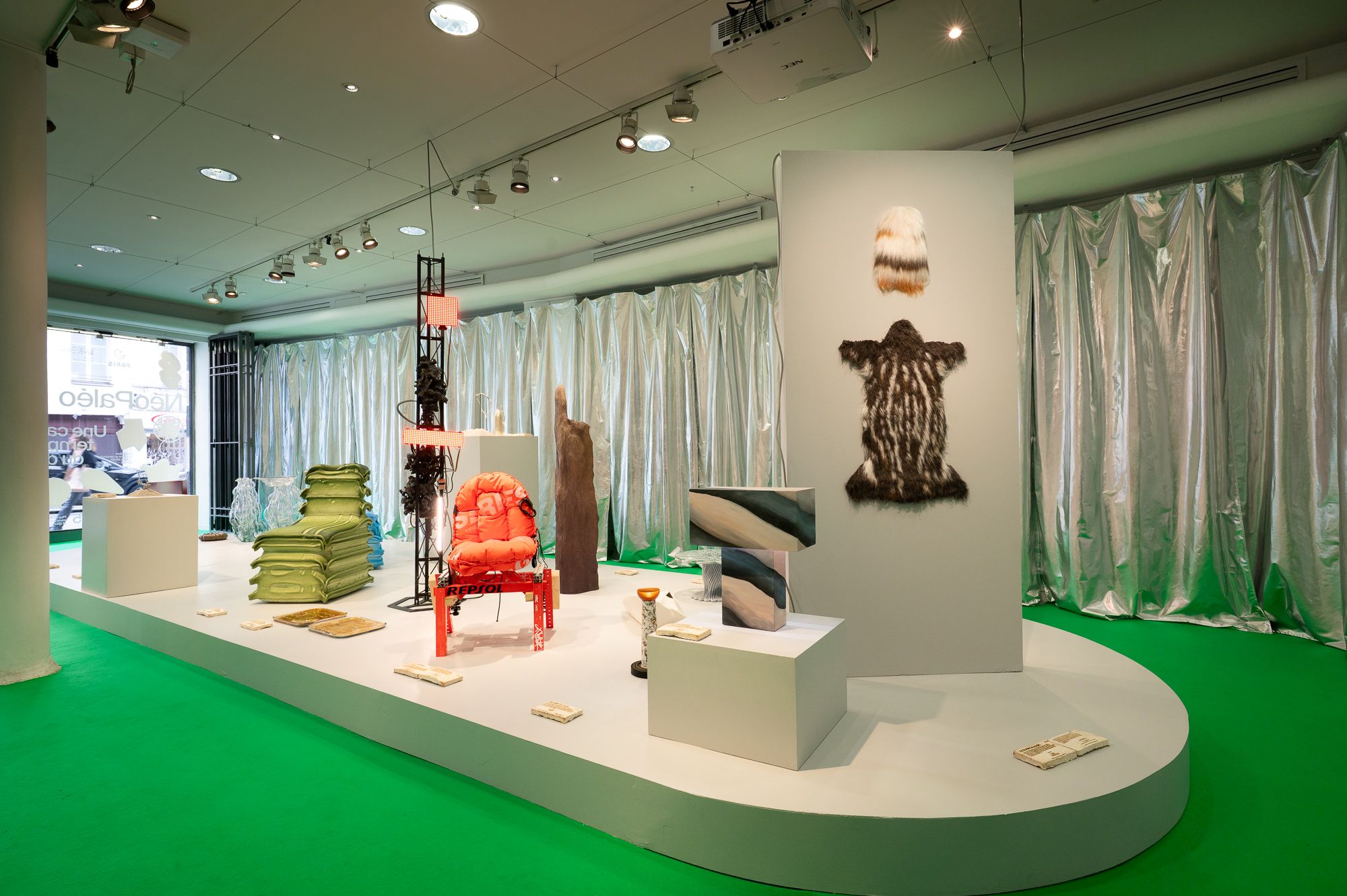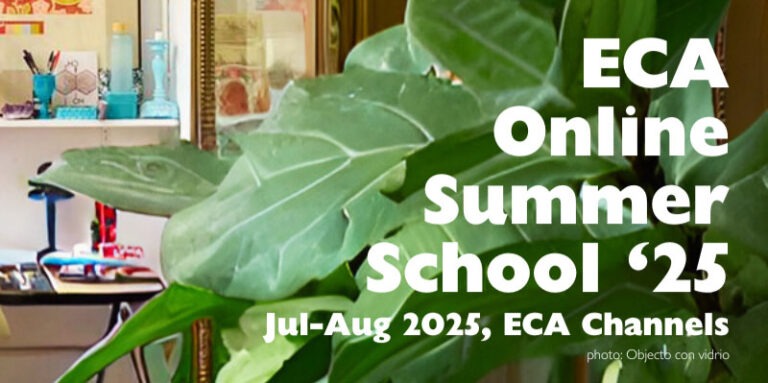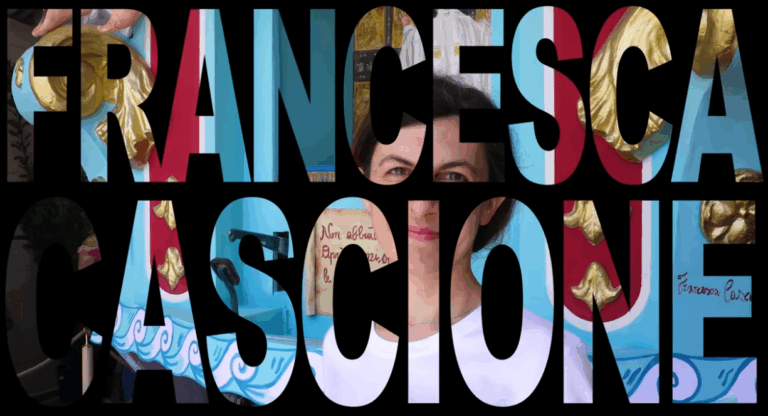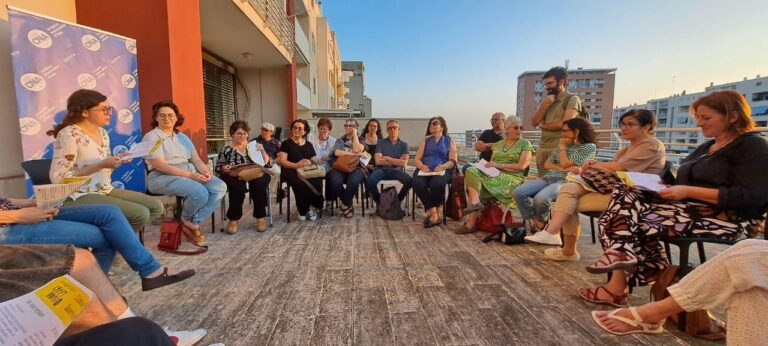Inside the light-filled gallery of the Bureau du Design, de la Mode et des Métiers d’art, the exhibition “NéoPaléo”, that opened at the Paris Design Week feels like stepping into a time capsule where prehistory meets tomorrow. Conceived and staged by the Paris-based duo Alexis Foiny and Antoine Behaghel known as studio BehaghelFoiny, the show gathers fifteen designers from across Europe in a single circular installation, a white plinth that reads like a geological core sample. Around it, objects whisper of origins and futures, where the handmade meets the high-tech.
The curators, both graduates of the École des Arts Décoratifs and known for their speculative, research-driven practice, set out to trace a cycle: from the first human encounter with raw matter, through the distancing of the machine age, and back again to a new intimacy with materials. They invited makers who embody this return. Some, like Brussels-based Nicolas Zanoni, melts industrial insulation into sculptural furniture. Others, such as Amsterdam’s Sarah Roseman, mineralise textile cords until they resemble crystallised stone. Designer Gala Espel casts silver from 3-D scans of fragile natural objects, while Antonin Mongin weaves plant fibres into fur-like textiles that challenge both synthetic and animal pelts.
Each participant treats design and craft as a living experiment. Algae becomes a luminous object (Samuel Tomatis); plastic sheets are blown like glass into sea-creature forms (Dorian Renard); mycelium grows typography across exhibition signage designed by Alec Vivier Reynaud. The works feel both archaic and speculative, as if they were unearthed from a future archaeology.
In today’s climate of industrial excess and ecological urgency, “NéoPaléo” reads as a manifesto. It shows that contemporary design is not a retreat into nostalgia but a radical method for innovation and resilience. By bringing together these diverse European voices, the curators argue that the oldest human impulse, shaping matter with imagination, remains the surest path forward.
Running through the end of October, this exhibition invites visitors to wander slowly, to feel the pull of clay, metal, fungus and code, and to glimpse how yesterday’s gestures might yet sculpt a sustainable tomorrow.

